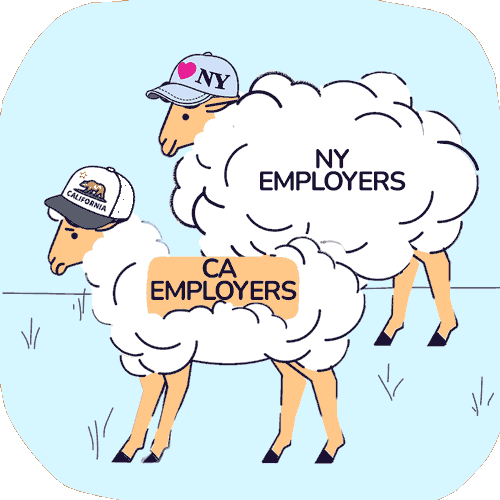Workers' Comp Exec: WCIRB "Skews Statistics"
.gif)
Widely-respected industry journal Workers’ Comp Executive recently offered a powerful, public criticism of the Workers’ Compensation Insurance Rating Bureau (WCIRB).
The WCIRB is an insurer advocacy group upon which the California government inexplicably relies for workers’ compensation data and reports.
In a gloves-off rebuke, the Executive accuses the WCIRB of distorting state legislators’ understanding of the workers’ comp system. According to the Executive, the “WCIRB Skews Statistics” to downplay the profitability of workers’ comp for insurers.
California law mandates annual reports from the WCIRB to the state Legislature. The Commission on Health and Safety and Workers’ Compensation (CHSWC), whose annual reports are considered authoritative by regulators, legislators, and online commentators, also relies largely on questionable WCIRB data—which the WCIRB openly acknowledges is:
- Self-reported exclusively by its insurer members
- Wholly unverified by the WCIRB or any other party
By openly proclaiming its concerns about WCIRB bias, the Executive—which has consistently reminded its readers that the WCIRB operates in the interests of its insurer members—has intensified its ongoing and well-founded criticism.
We applaud the Executive’s willingness to state the facts boldly. As daisyNews has reported, the WCIRB offers questionable value to legislators, but incalculable value to insurers.
WCIRB Reports “Do Not Present an Accurate View of Reality”
The Executive takes the WCIRB to task for presenting incomplete, misleading data in its annual report to the Legislature—and potentially warping legislators’ view of California’s workers’ comp system. The Executive states (emphases ours).
“…most legislators and policymakers who lack depth in insurance accounting and look at the report’s bottom line are unaware of the nuances and how the data is skewed. Because of what is both included and excluded from the Bureau’s calculations, the results do not present an accurate view of reality. Usually, it skews the industry’s results to look worse than they are.
The Bureau is a private organization with quasi-governmental responsibility. It is financially supported exclusively by insurance carriers in whose interests it operates.”
Specifically, the Executive cites several factors that are left out or glossed over in this WCIRB 2023 report, including:
- Insurers’ returns on investments
- Reinsurance
- Deductible credits
- Retrospective rating plans
Further, according to the Executive, the WCIRB data on insurer profitability includes self-reported data from California’s State Compensation Insurance Fund (SCIF), a non-profit public entity. SCIF is unprofitable by design; including its results in reports on overall insurer profitability inevitably paint an inaccurate picture.
The Executive also notes (emphasis ours) that the WCIRB report also includes payments made by the California Insurance Guarantee Association (CIGA), which assumes the obligations of failed insurance carriers— without also including offsetting premiums:
“In other words, the [WCIRB] only includes one side of the balance sheet: CIGA’s payments are excluded from the industry’s underwriting profit calculation but are included in the loss totals, further skewing results.”
According to the Executive, sometimes CIGA’s payments don’t count. But when the WCIRB discusses insurer losses, CIGA’s losses are factored in—making the situation for insurers appear more dire than it actually is.
Smoke and Mirrors
As daisyNews has pointed out on numerous occasions, WCIRB reports also conflate the costs of actually treating injured workers with the costs of fighting not to treat injured workers.
By including costs like Medical-Legal expenses and defense attorney fees in so-called “medical” costs, the WCIRB obscures the fact that insurers’ expenses are vastly inflated by their own efforts to deprive injured workers of benefits. As the Executive article also notes (emphases again ours):
“Inpatient and outpatient services accounted for $530 million, while med-legal evaluations climbed to $400 million…”
“Spending on attorneys—defense and applicant’s attorneys—increased to $1.3 billion overall. Defense attorneys earned $938 million last year, and applicant’s attorneys earned $402 million. In 2022, the respective payments were $850 million and $395 million.
In other words, the notion that insurers are struggling to profit because they’re spending so much on healing injured workers is an absolute farce—but it’s a notion the WCIRB works very hard to impress upon legislators.
The WCIRB has proven time and again that accuracy, objectivity, and reliably informing state authorities is not the organization’s purpose.
Instead, the WCIRB muddies the waters so that ill-informed legislators and regulators lack a clear view of just how much profit insurers (and claims administrators and their private equity owners) are raking in—even as providers flee the system and injured workers struggle to find the care they need.
daisyBill makes treating injured workers easier, faster, and less costly. Request a free demonstration below.
REQUEST DEMO
DaisyBill provides content as an insightful service to its readers and clients. It does not offer legal advice and cannot guarantee the accuracy or suitability of its content for a particular purpose.
.gif)



